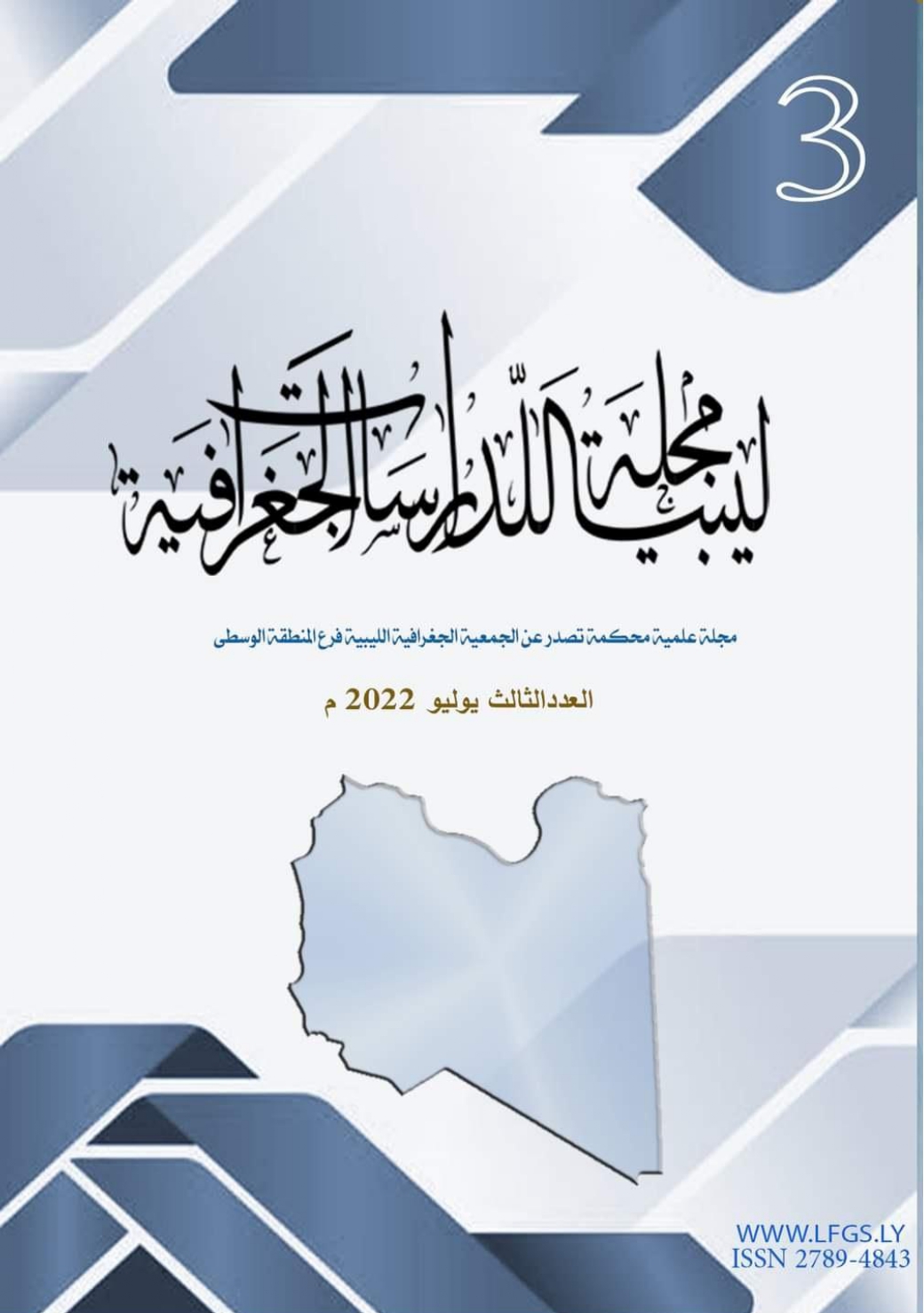Mapping of Geological Formations in the Bi’r Zaltan Area Using Remote Sensing Technique
DOI:
https://doi.org/10.37375/jlgs.vi3.1758Keywords:
Remote sensing, Landsat image, False-color composite images, Supervised Classification, Geological mapAbstract
Remote sensing and satellite images are useful scientific methods for geological investigations and to obtain direct geological surveys in the Bi’r Zlatan area, which belongs to the northern part of the Libyan Desert. Through the current study, ENVI 5 program was used to apply different digital processors to the Landsat 7 ETM+ image to determine the geological units. A supervised classification process was applied through a false color composite image with bands 741 was taken as a basis in the classification and cartographic processes and then compared with a published geological map of the same region to identify the names of the geological formations exposed. geological classified map of the study area was produced based on the principles of visual interpretation by calling the classification map in the GIS environment and then matched with the geological map in order to evaluate the accuracy of classifying with the regulation of the transparency level for the upper layer to 50% through ArcGIS 10, thus, the overall spatial accuracy of the obtained map was 70%, which was in agreement with the geological map of the study area. Finally, the digital geological map of the Bi’r Zaltan area can be linked to a wide database that is prepared for all the available geological information about this area. As well, this data can be updated in the future when any geological developments occur.
References
- Al-Azzawi, N. K., R. G. Al-Banaa, and M. M. Thabit. 2018. Using of Image Processing for a Multi-Spectral Bands Image to Specify the Rock Units in Gara Barran Anticline/Duhok Northern Iraq. Derasat Mosulia Journal:165-183.
- Al-Rawashdeh, S., B. Saleh, and M. Hamzah. 2006. The use of remote sensing technology in geological investigation and mineral detection in El Azraq-Jordan. Cybergeo: European Journal of Geography.
- Alkoffash, M. S., M. J. Bawaneh, H. Muaidi, S. Alqrainy, and M. Alzghool. 2014. A survey of digital image processing techniques in character recognition. International Journal of Computer Science and Network Security (IJCSNS) 14:65.
- Borie, C., C. Parcero-Oubiña, Y. Kwon, D. Salazar, C. Flores, L. Olguín, and P. Andrade. 2019. Beyond site detection: The role of satellite remote sensing in analysing archaeological problems. A case study in lithic resource procurement in the Atacama Desert, Northern Chile. Remote Sensing 11:869.
- Campbell, J. B., and R. H. Wynne. 2011. Introduction to remote sensing. Guilford Press Publications Inc, USA.
- Daily, M. 1982. Geology and image processing. Pages 9-12 in Design of digital image processing systems. SPIE.
- Hassaan, M. A. 2009. Change Detection of Inland Water Bodies Using Remote Sensing Techniques: A Case Study: Lake Maryuit, Egypt.
- Lupton, R., M. R. Blanton, G. Fekete, D. W. Hogg, W. O’Mullane, A. Szalay, and N. Wherry. 2004. Preparing Red‐Green‐Blue Images from CCD Data. Publications of the Astronomical Society of the Pacific 116:133.
- Mather, P., and B. Tso. 2016. Classification methods for remotely sensed data. CRC press.
- Melesse, A. M., Q. Weng, P. S. Thenkabail, and G. B. Senay. 2007. Remote sensing sensors and applications in environmental resources mapping and modelling. Sensors 7:3209-3241.
- Patra, S., M. Shekher, S. Solanki, R. Ramachandran, and R. Krishnan. 2006. A technique for generating natural colour images from false colour composite images. International Journal of Remote Sensing 27:2977-2989.
- Perumal, K., and R. Bhaskaran. 2010. Supervised classification performance of multispectral images. arXiv preprint arXiv:1002.4046.
- Pour, A. B., Y. Park, T.-Y. S. Park, J. K. Hong, M. Hashim, J. Woo, and I. Ayoobi. 2018. Regional geology mapping using satellite-based remote sensing approach in Northern Victoria Land, Antarctica. Polar Science 16:23-46.
- S.P.L.A.J, I. R. C. 1985. Explanatory Booklet for the Geological Map of Libya Sheet: BI'R ZALTAN NH 34-14.
- Saadi, N. M., E. Aboud, H. Saibi, and K. Watanabe. 2008. Integrating data from remote sensing, geology and gravity for geological investigation in the Tarhunah area, Northwest Libya. International Journal of Digital Earth 1:347-366.
- Saibi, H., M. Bersi, M. B. Mia, N. M. Saadi, K. M. S. Al Bloushi, and R. W. Avakian. 2018. Applications of remote sensing in geoscience. Recent Advances and Applications in Remote Sensing 181.
- Sgavetti, M., L. Pompilio, and S. Meli. 2006. Reflectance spectroscopy (0.3–2.5 µm) at various scales for bulk-rock identification. Geosphere 2:142-160.
- T AL-Sayegh, A., and N. A Daood. 2012. Study of the Spectral Behavior of the Eastern Part of Sinjar Mountion in Mulit-Bands of Sinjar Mountain in Multi-Bands. Iraqi National Journal of Earth Sciences 12:1-10.
- Toet, A., and J. Walraven. 1996. New false color mapping for image fusion. Optical engineering 35:650-658.
- Zha, Y., J. Gao, and S. Ni. 2003. Use of normalized difference built-up index in automatically mapping urban areas from TM imagery. International Journal of Remote Sensing 24:583-594














